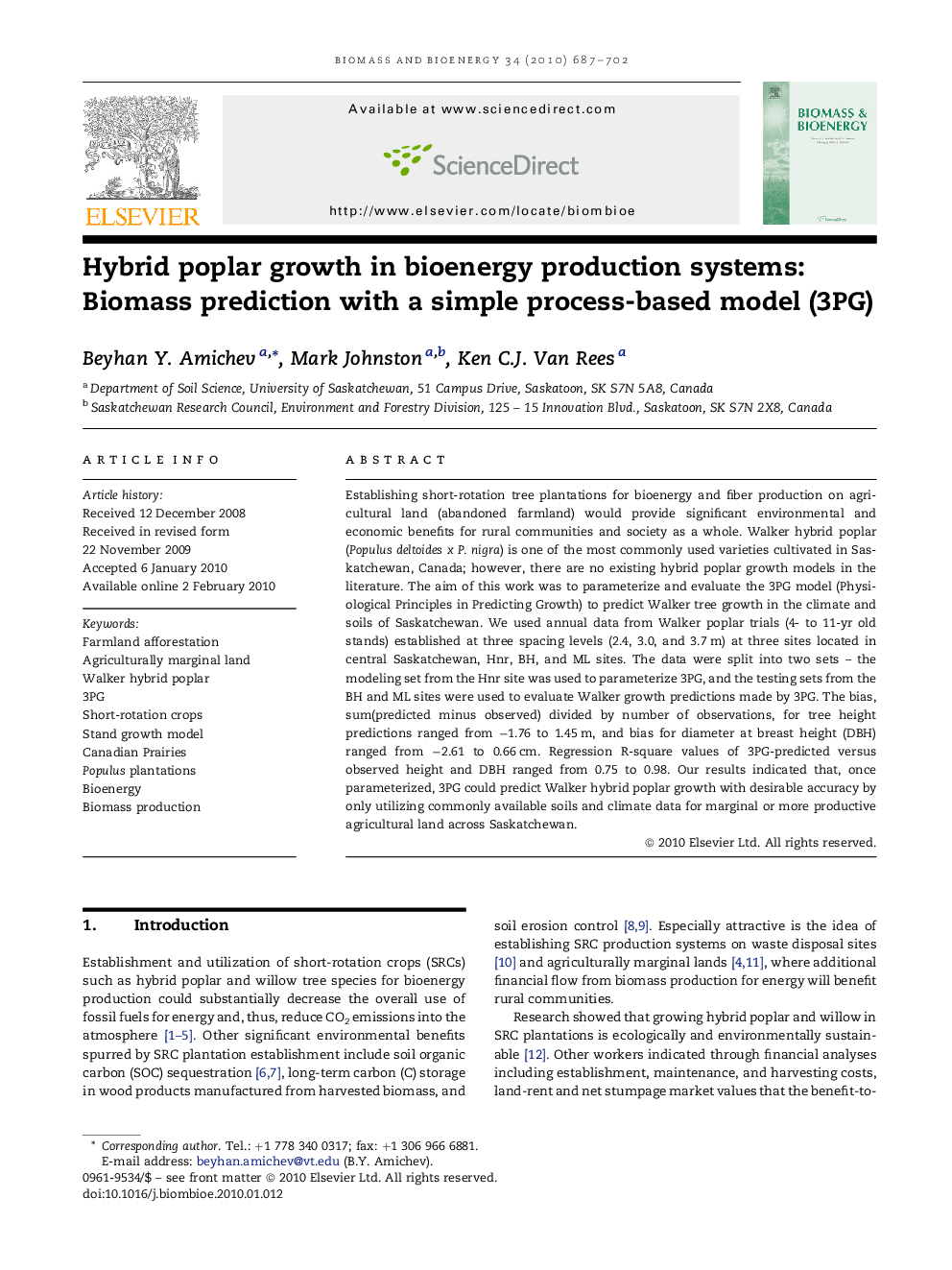| Article ID | Journal | Published Year | Pages | File Type |
|---|---|---|---|---|
| 678349 | Biomass and Bioenergy | 2010 | 16 Pages |
Abstract
Establishing short-rotation tree plantations for bioenergy and fiber production on agricultural land (abandoned farmland) would provide significant environmental and economic benefits for rural communities and society as a whole. Walker hybrid poplar (Populus deltoides x P. nigra) is one of the most commonly used varieties cultivated in Saskatchewan, Canada; however, there are no existing hybrid poplar growth models in the literature. The aim of this work was to parameterize and evaluate the 3PG model (Physiological Principles in Predicting Growth) to predict Walker tree growth in the climate and soils of Saskatchewan. We used annual data from Walker poplar trials (4- to 11-yr old stands) established at three spacing levels (2.4, 3.0, and 3.7Â m) at three sites located in central Saskatchewan, Hnr, BH, and ML sites. The data were split into two sets - the modeling set from the Hnr site was used to parameterize 3PG, and the testing sets from the BH and ML sites were used to evaluate Walker growth predictions made by 3PG. The bias, sum(predicted minus observed) divided by number of observations, for tree height predictions ranged from â1.76 to 1.45Â m, and bias for diameter at breast height (DBH) ranged from â2.61 to 0.66Â cm. Regression R-square values of 3PG-predicted versus observed height and DBH ranged from 0.75 to 0.98. Our results indicated that, once parameterized, 3PG could predict Walker hybrid poplar growth with desirable accuracy by only utilizing commonly available soils and climate data for marginal or more productive agricultural land across Saskatchewan.
Related Topics
Physical Sciences and Engineering
Chemical Engineering
Process Chemistry and Technology
Authors
Beyhan Y. Amichev, Mark Johnston, Ken C.J. Van Rees,
